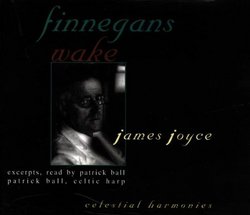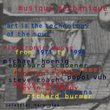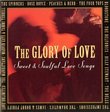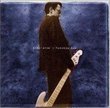| All Artists: Patrick Ball Title: Finnegan's Wake Members Wishing: 0 Total Copies: 0 Label: Celestial Harmonies Release Date: 7/2/1997 Genres: Folk, International Music, Special Interest, New Age, Pop Styles: Traditional Folk, British & Celtic Folk, Celtic, Poetry, Spoken Word & Interviews, Meditation, Instrumental Number of Discs: 2 SwapaCD Credits: 2 UPC: 013711411324 |
Search - Patrick Ball :: Finnegan's Wake
 | Patrick Ball Finnegan's Wake Genres: Folk, International Music, Special Interest, New Age, Pop
Following Patrick Ball's award winning spoken word debut Storyteller: Gwilan's Harp and other Celtic Tales, comes a rare reading of the great manuscript Finnegans Wake by James Joyce. Published in 1939, Joyce received g... more » |
Larger Image |
CD Details
Synopsis
Album Description
Following Patrick Ball's award winning spoken word debut Storyteller: Gwilan's Harp and other Celtic Tales, comes a rare reading of the great manuscript Finnegans Wake by James Joyce. Published in 1939, Joyce received grave criticism for the Wake which he labored one-third of his life on, largely because the work was before its time, impenetrable by most, if not all readers. With Joyce's sudden death six months later, it has become a masterpiece of sorts for the world to decipher.Penetrable or not, Finnegans Wake clearly speaks to the very heart of the Irish and perhaps to the very soul of man. Riddled in the Irish folkloric tradition of wordplay, Finnegans Wake reflects Joyce's Irish love of words and tremendously keen ear for the power and music they acquire when spoken. Says Ball, "I found that when the Wake is read aloud, various layers of meaning emerge from the sound of the words: indeed, some startling revelations emerge when the rhythms, the puns and the dialects are spoken."The first section, riverrun, is indispensable: the first notes of the great allegorical symphony that is to follow. The following tracks introduce the characters who represent the various aspects of the family of man. Anna Livia Plurabelle completes this great cycle and happens to be one of the most sublimely beautiful passages in modern literature. As Ball eloquently summarizes, "Hard to understand, and still mostly obscure to me, but the sound of the words and the phrasings are lovely. And the theme is timeless: the river flowing back to the sea, where it will eventually rise into the sky and fall again as rain on the Wicklow Hills where the river has its source. That image is Joyce's basic theme, I suppose. As Joseph Campbell put it, 'James Joyce presents, envelops, amplifies and recondenses nothing more nor less than the eternal dynamic implicit in birth, conflict, death, and resurrection.'"With Ball's understanding and love for the Irish wordplay combined with his expertise in traditional Irish music he seamlessly blends the Celtic harp with each piece emphasizing the music of the words.
Similar CDs
| Tomohito Aoki Experience Genres: International Music, Jazz, Pop Label: Jvc Japan | |

 Track Listings (4) - Disc #1
Track Listings (4) - Disc #1


